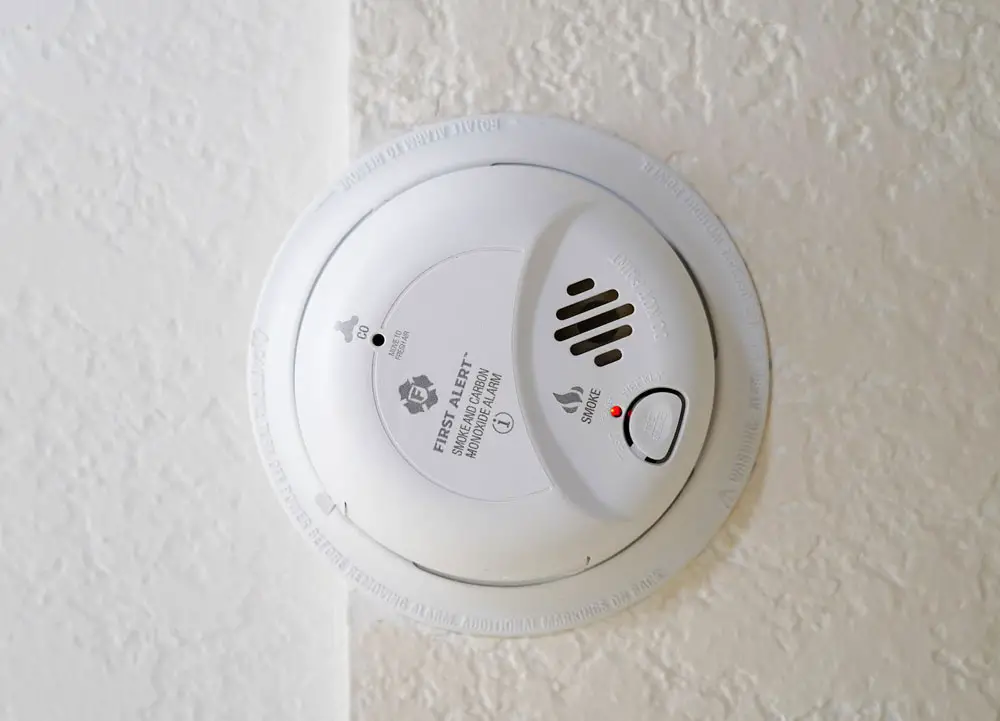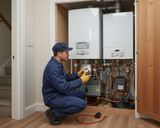When the chill of winter sets in, a gas heater can be a comforting companion, warming your home and keeping the frost at bay. But as with any household appliance, safety should be at the forefront of your mind.
If you're considering replacing your gas heater, here are nine crucial things you should know to ensure your home remains safe and snug.
1. The Basics of Gas Heaters
Gas heaters have been a staple in British homes for decades, valued for their efficiency and ability to provide consistent warmth.
However, it's important to recognise that they operate by burning natural gas or propane, which produces heat and, if not managed correctly, can lead to potential hazards such as carbon monoxide (CO) poisoning, gas leaks, and fires.
Understanding the type of gas heater you have – be it flued, unflued, or ducted – is essential before replacing a gas heater.
2. Carbon Monoxide: The Invisible Danger

Image credit: hull.ac.uk
One of the most significant risks associated with gas heaters is carbon monoxide, an odourless, colourless gas that can be lethal in high concentrations.
Poorly maintained or faulty gas heaters can emit CO, which can cause symptoms ranging from headaches and dizziness to, in extreme cases, death.
Before replacing your gas heater, it’s crucial to ensure that your home has a CO detector installed and that it’s working correctly.
Regular servicing by a qualified technician can also mitigate this risk.
3. The Importance of Ventilation
Proper ventilation is critical for the safe operation of a gas heater. Without adequate airflow, toxic gases like CO can accumulate in your home.
Flued heaters expel gases outside, which makes them safer for enclosed spaces, whereas unflued heaters release emissions directly into the room.
If you’re thinking about replacing an unflued heater, consider switching to a flued model or ensure that the room has ample ventilation.
Remember, a well-ventilated home is a safer home.
4. Energy Efficiency and Running Costs
When replacing your gas heater, energy efficiency should be a key consideration. Older models tend to be less efficient, meaning they use more gas to produce the same amount of heat as newer, more efficient models.
Modern gas heaters are designed with energy conservation in mind, which not only reduces your carbon footprint but also lowers your utility bills.
Look for heaters with a high energy star rating – the more stars, the better.
5. Regular Maintenance: A Must for Safety
A well-maintained gas heater is a safer gas heater. Regular servicing, ideally once a year, can help identify and fix potential issues before they become serious problems.
This includes checking for gas leaks, ensuring the burner is clean and functioning correctly, and making sure all safety features are in working order.
If you’re replacing your gas heater, set a reminder for an annual service to keep it running safely and efficiently.
6. Consider the Environmental Impact
While gas heaters are effective, they do contribute to greenhouse gas emissions. As the UK moves towards a greener future, it's worth considering the environmental impact of your heating choice.
If you're environmentally conscious, you might explore alternative heating options like electric heat pumps, which are more eco-friendly.
However, if you choose to stick with gas, consider a high-efficiency condensing gas heater, which produces fewer emissions than older models.
7. Safety Features: Don’t Compromise
Modern gas heaters come equipped with a range of safety features designed to protect you and your family.
These include oxygen depletion sensors, which shut off the heater if oxygen levels drop too low, and flame failure devices, which cut off the gas supply if the flame is extinguished.
When replacing your gas heater, don’t skimp on these features – they’re your first line of defence against potential hazards.
8. Professional Installation is Non-Negotiable
It might be tempting to save a few pounds by installing your gas heater yourself, but this is one area where you shouldn’t cut corners.
Professional installation by a Gas Safe registered engineer is essential to ensure the heater is fitted correctly and operates safely. Improper installation can lead to gas leaks, inefficient operation, and a higher risk of CO poisoning.
Always hire a qualified professional to handle your gas heater replacement.
9. The Lifespan of a Gas Heater
Before replacing your gas heater, it’s worth considering how long your current heater has been in use.
The average lifespan of a gas heater is around 15 years, though this can vary depending on the model and how well it’s been maintained.
If your heater is approaching the end of its lifespan, replacement might be the safest and most cost-effective option.
An old heater is more likely to develop faults, which can compromise safety and efficiency.
Essential Safety Tips for Gas Heater Replacement
Gas heaters have been keeping homes warm and cosy for generations, but like any appliance, they require care and attention to operate safely.
Before you decide to replace your gas heater, take the time to consider these nine important factors.
From ensuring proper ventilation and regular maintenance to investing in modern safety features, these steps will help you make an informed decision and keep your home safe.
Remember, safety should always come first when it comes to heating your home. By taking the necessary precautions and staying informed, you can enjoy the warmth of your gas heater with peace of mind.



 Author: Matthew Chiappini
Author: Matthew Chiappini